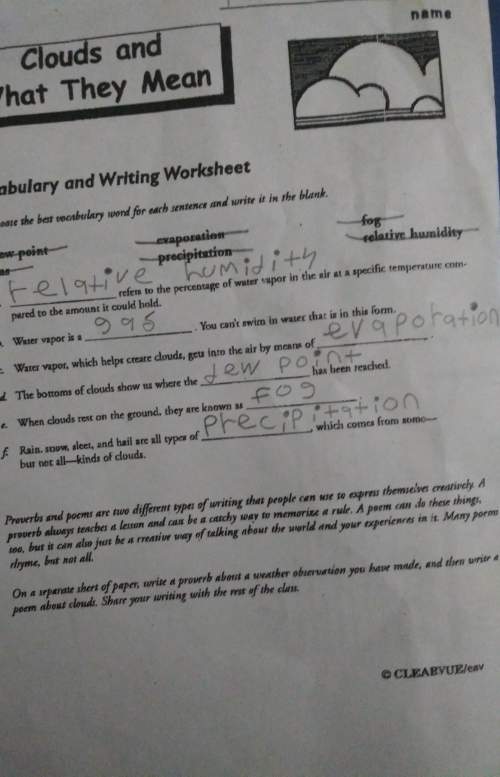1 point
In a biology experiment the number of yeast cells is determined after 24
hours of gro...

Physics, 01.09.2020 04:01 bracefacer42
1 point
In a biology experiment the number of yeast cells is determined after 24
hours of growth at different temperatures. What is the INDEPENDENT
variable? *
type of yeast
24 hour time period
different temperatures
number of yeast cells

Answers: 2


Other questions on the subject: Physics


Physics, 22.06.2019 00:20, alyvia05
Suppose that an electromagnetic wave which is linearly polarized along the x−axis is propagating in vacuum along the z−axis. the wave is incident on a conductor which is placed at z > 0 region of the space. the conductor has conductivity σ, magnetic permeability µ and electric permittivity ε. (a) find the characteristic time for the free charge density which dissipates at the conductor. (b) write the maxwell equations and derive the wave equation for a plane wave propagating in a conductor. (c) find the attenuation distance at which the incident amplitude reduces to e ^−1 of its initial value. (d) find the electric and magnetic fields inside the conductor. 8 (e) find the power loss per area of the incident electromagnetic wave at the surface of conductor.
Answers: 1

Physics, 22.06.2019 11:00, kayla65u
I'm thinking it's 2 you are asked to explain the earth's magnetic field. which is the best reply? 1. the earth's magnetic south is similar to the north pole of a magnet. 2. the earth's core has a strong magnetic charge similar to the south pole of a magnet. 3. the earth's geomagnetic south is similar to the south pole of a magnet. 4. the earth's magnetic charge is not centered at either pole; it varies based on location.
Answers: 1

Physics, 22.06.2019 14:00, meleaallison
Amass attached to a spring is displaced from its equilibrium position by 5cm and released. the system then oscillates in simple harmonic motion with a period of 1s. if that same mass–spring system is displaced from equilibrium by 10cm instead, what will its period be in this case? a mass attached to a spring is displaced from its equilibrium position by and released. the system then oscillates in simple harmonic motion with a period of . if that same mass–spring system is displaced from equilibrium by instead, what will its period be in this case? a) 0.5sb) 2sc) 1sd) 1.4s
Answers: 2
You know the right answer?
Questions in other subjects:









Medicine, 14.08.2019 08:10




